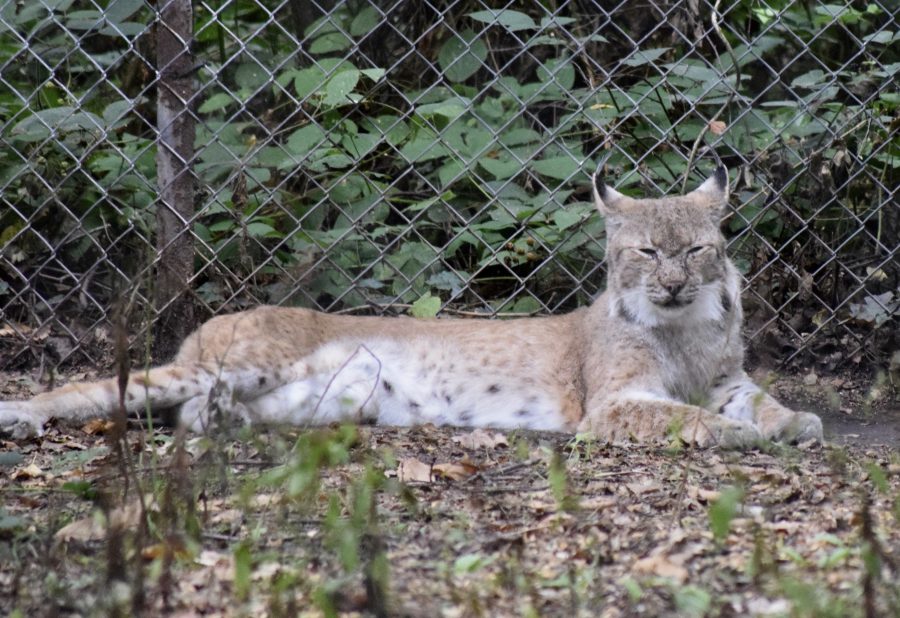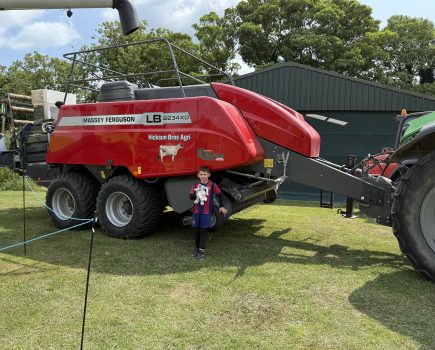There are plenty of things going on that may give sheep producers some cause for concern, including proposed inheritance tax changes, dry weather and poor grass growth, increasing costs and poorer than anticipated prices. These are short-term issues, some of which may have significant longer-term implications, but there are other potential issues on which we need to keep an eye; issues that are unlikely to have an immediate impact but which, in the long term, may have a significant bearing on the wider sheep industry.
Rewilding is a philosophy that is gathering increasing interest and support amongst certain sectors of the agricultural community; producers will inevitably have mixed views on the subject, but I suspect most have a rather negative opinion, possibly tinged with an element of doubt. There is, though, one aspect of rewilding, posited by some of its more enthusiastic advocates, for which that element of doubt will almost certainly disappear amongst sheep producers; proposals for the reintroduction of apex predators, notably lynx, wolves and bears.
Although the latter receives support from some of the more extreme rewilders, in reality coexistence with such a large, free-ranging predator in the UK would simply be neither feasible nor achievable. The reintroduction of wolves has wider support but is again highly unlikely. Wolves require huge territories and individuals may range silently and unseen over hundreds of miles, way beyond anticipated territories. Public perception of wolves, possibly somewhat biased and based largely upon myths and folklore, would almost certainly preclude any attempts at reintroduction, or at least free ranging reintroduction. Which leaves the Lynx.
There are strong lobby groups that have produced a number of quite exhaustive, serious studies considering the feasibility and impacts of lynx reintroduction in the UK, calculating sustainable populations and identifying suitable areas for free release. Three key areas pinpointed are parts of the Scottish Highlands, Kielder Forest and Thetford Forest, with Kielder the most favoured option and Thetford the least.
OK, but these are all a long way from the South East, so why should it impact us? A good question, but one that ignores the integrated and stratified structure of the UK sheep industry; any action that has a significant bearing on one sector of the industry, such as the hills and uplands, will ultimately have a consequential impact elsewhere, no matter how far removed.
The lynx is not just a big pussy cat. It is a powerful (up to a metre long and 20kg-plus) predator that will, given the opportunity, predate on sheep; statistics vary, but experiences of sheep producers in Norway indicate a kill rate of up to 10 sheep per lynx per year.
The logic of those pressing for reintroduction is that the lynx will help protect proposed afforestation projects in some areas by killing off one of the main pests that cause significant damage in fresh forestry planting, the red deer, an assumption that is somewhat simplistic, because it does tend to ignore some blindingly obvious facts. Firstly, whilst Lynx may be quite successful in hunting some of the smaller deer species, red deer are generally rather too large for successful predation, although the ‘climate of fear’ created by their presence in an area may have limited success in scaring them away. Secondly, sheep represent a somewhat easier and more manageable option for a lynx’s lunch than a red deer; that same ‘climate of fear’ will no doubt have greater impact on upland/hill sheep producers than the deer and will inevitably lead to reductions in hill and upland sheep numbers.
Lynx will kill foxes, which is only a small plus as there are already rather more established and proven control options available. Similarly, in terms of protecting new forestry from deer damage we already have a rather more successful and effective apex predator in ourselves. The wider use of controlled harvesting of wild deer populations may be more emotive and may have other financial implications, particularly for deer stalking estates, but is a rather more effective and significantly less complicated option.
Certainly, now and in the foreseeable future the reintroduction of apex predators is something the sheep sector can do without and, although not imminent, is an area that needs careful watching. Who, 20 years ago, would have thought that we would see the reintroduction of the beaver to wetlands and rivers in the UK? We have quietly transitioned, in the space of a few years, from contained to free-range reintroduction; beavers may not be predatory but they are capable hydrological engineers, adept at generating significant changes to local environments and ecosystems with possible unintended and unforeseen consequences that may not always be beneficial.
At least for one significant proxy-predator, the domestic dog, there is some positive news. After several changes of sponsor and a rather juddering, one-year journey through Parliament, there has been a successful conclusion to the Dogs (Protection of Livestock) (Amendment) Bill. The amendments add clarification and extend what constitutes an offence, with a separation between livestock worrying and the more serious offence of attacking livestock.
There is also provision for greater police powers to seize and detain dogs where there are reasonable grounds to suspect that they are responsible for worrying or attacking livestock, plus powers to recover, from owners, the costs associated with seizure, securing evidence and detaining dogs. Probably the most significant aspect of the changes, however, is the increase in the maximum penalty from £1,000 to an unlimited fine.
In spite of recent rains, the dry spring continues to be an issue for many sheep producers and has now reached a point where, for some, the longer-term impacts will be felt for the rest of the year through poorer grazing and reductions, in terms of both quantity and quality, of next winter’s forage crops. With such prospects adding to increased production costs already incurred as a result of the dry weather, firmer lamb prices would be more than welcome, but although better than in 2023, many producers are seeing returns on comparable finished lambs significantly down on those presented at a similar time last season. The tribulations of sheep production!
For more like this, sign up for the FREE South East Farmer e-newsletter here and receive all the latest farming news, reviews and insight straight to your inbox.







